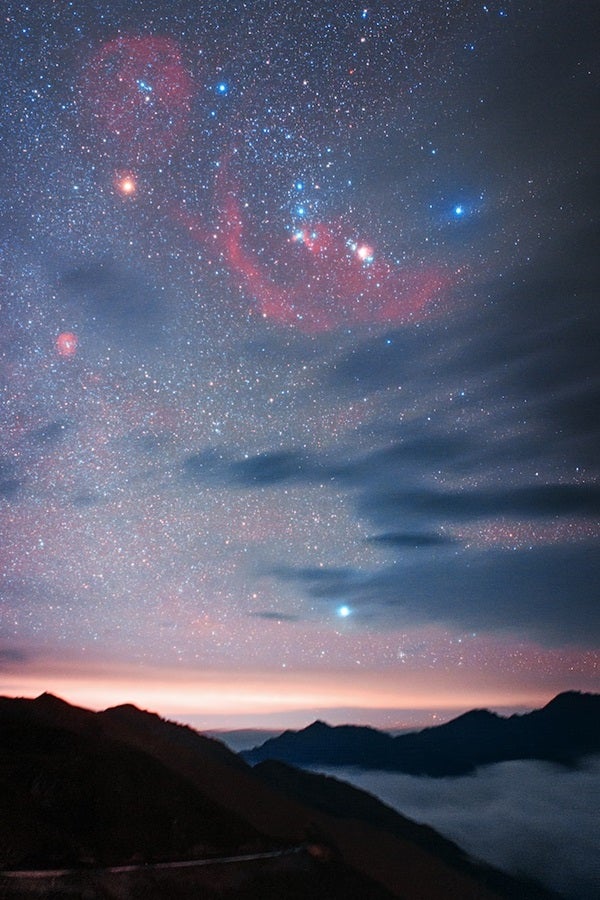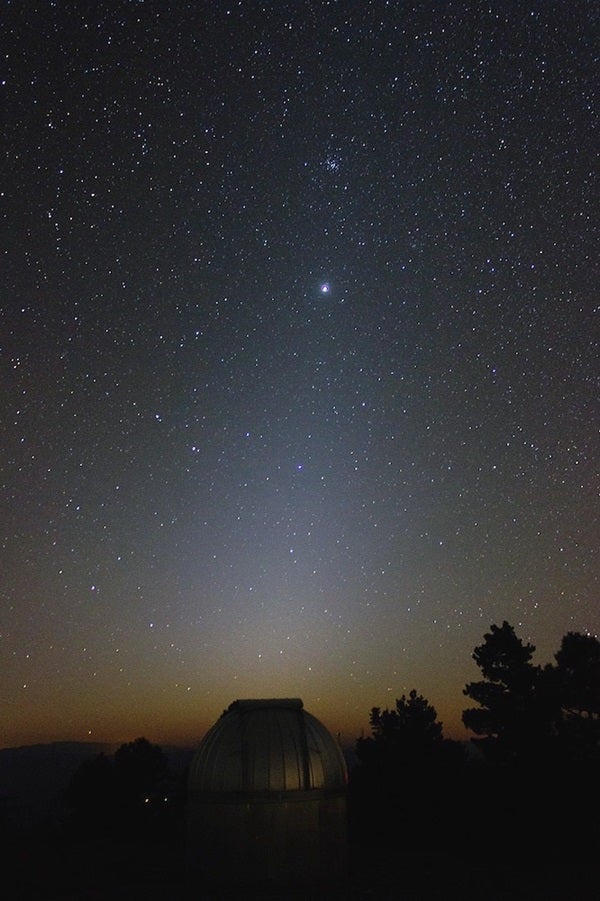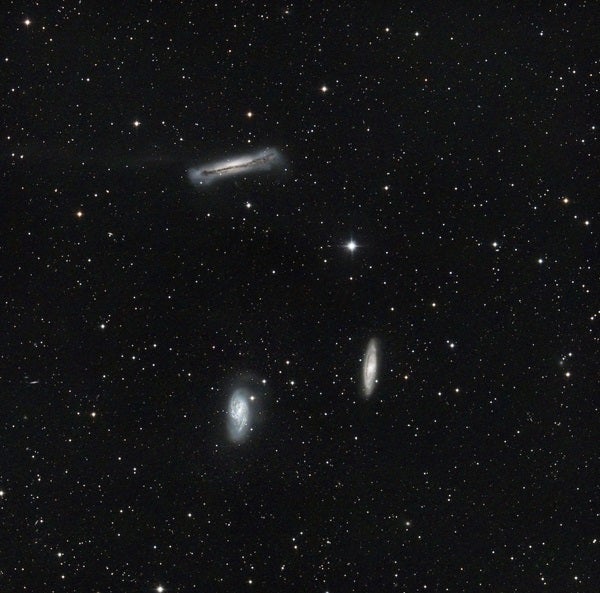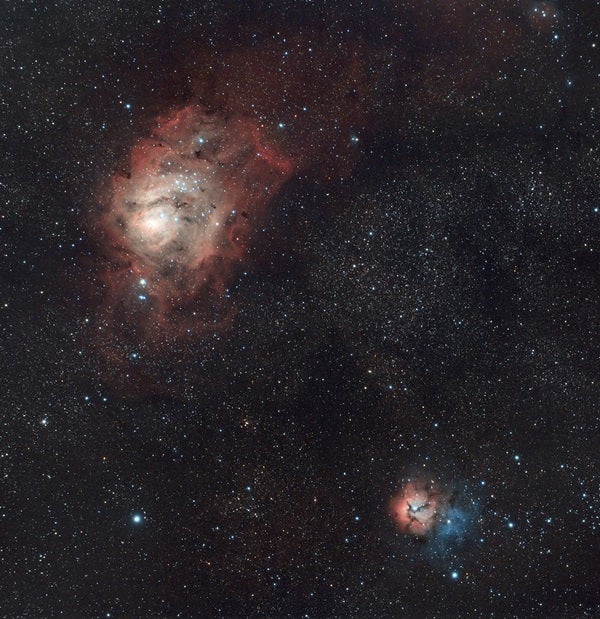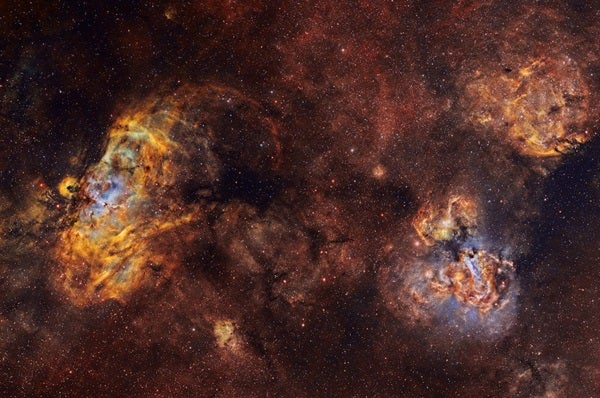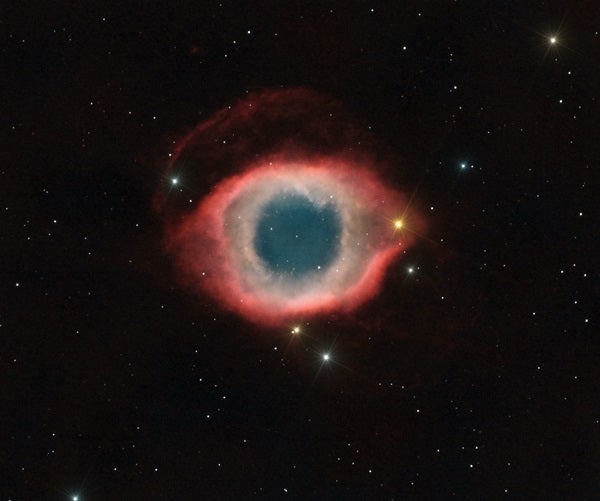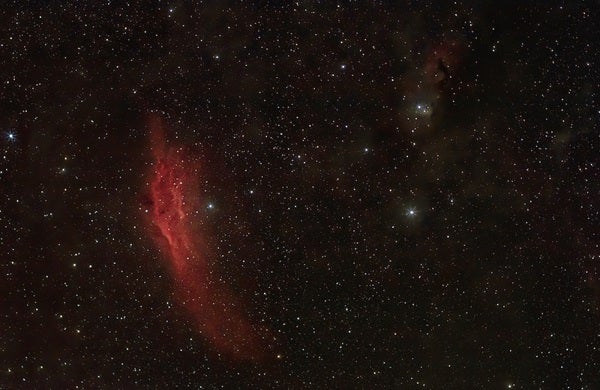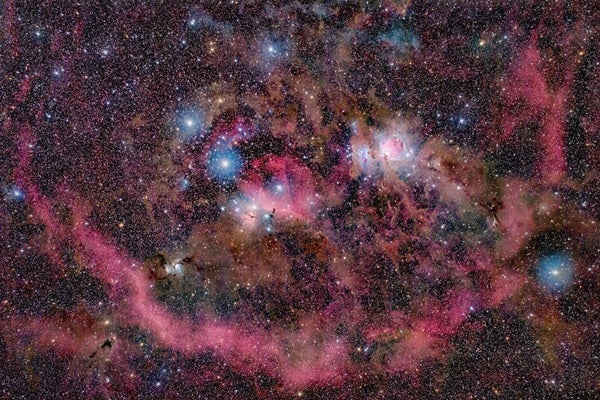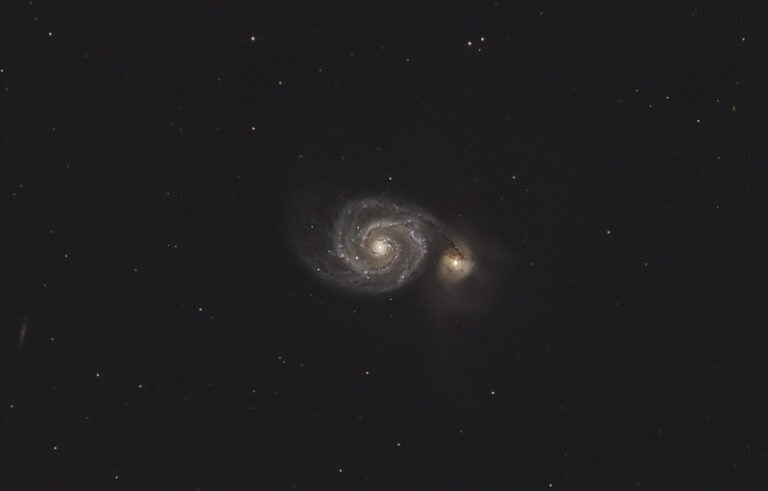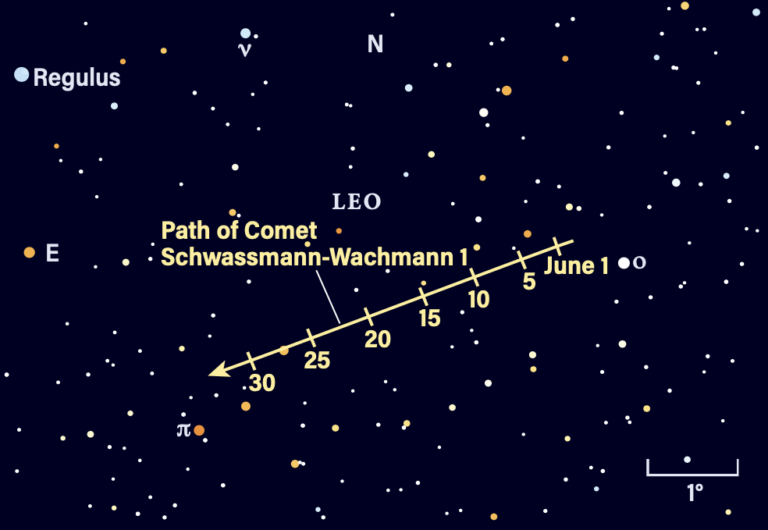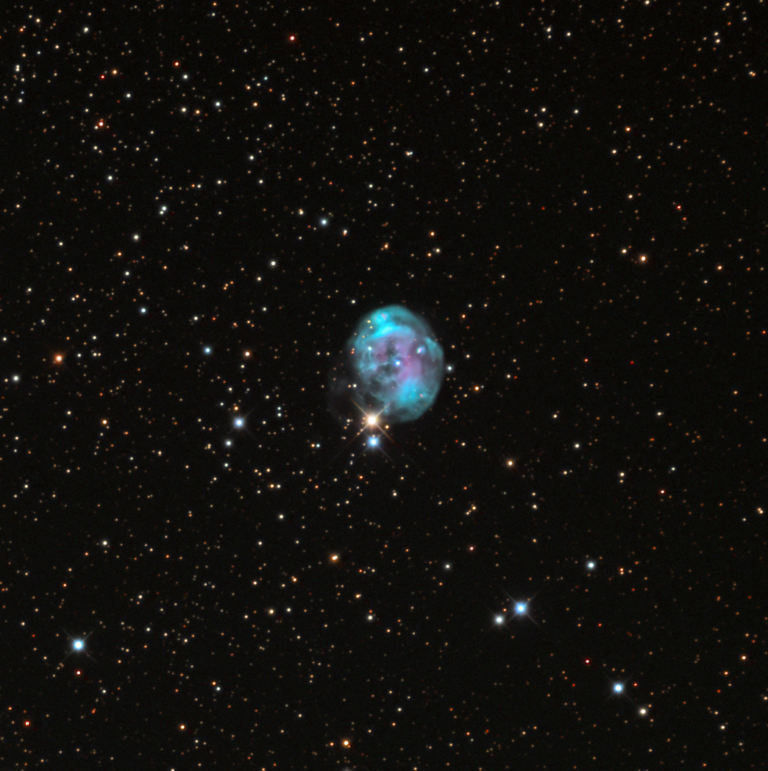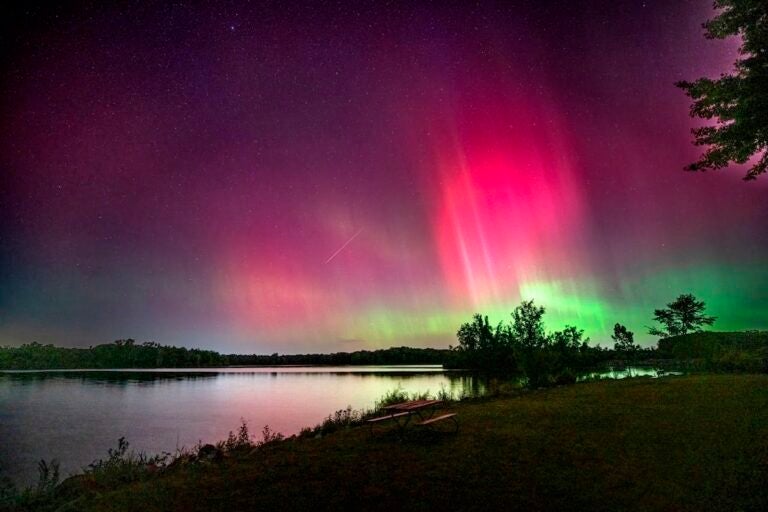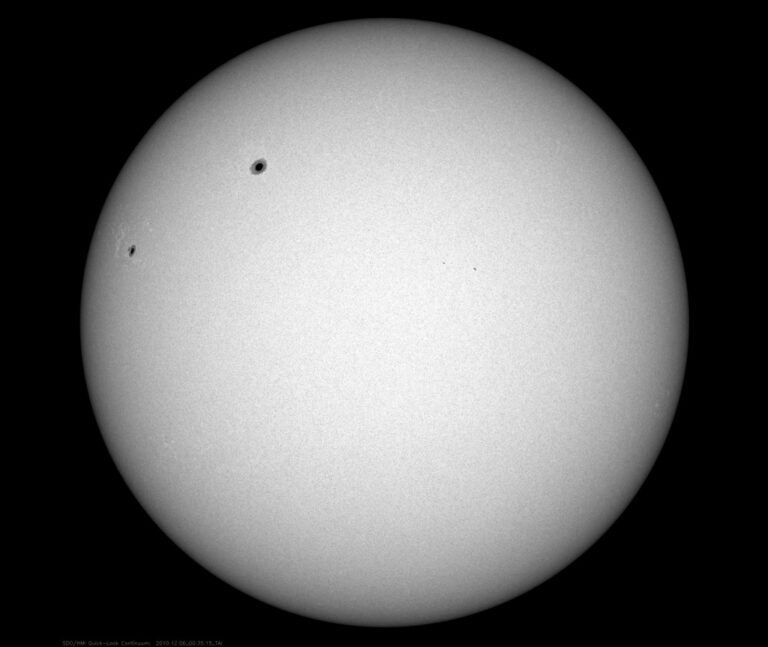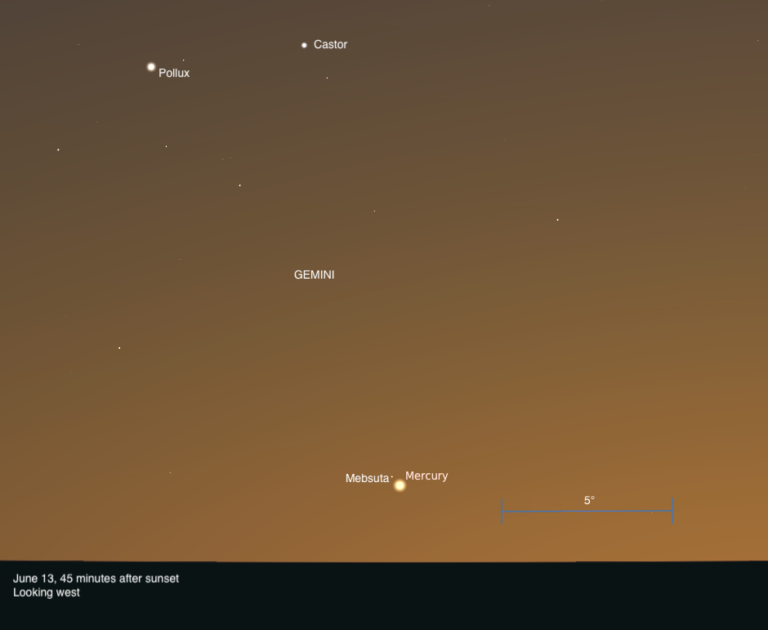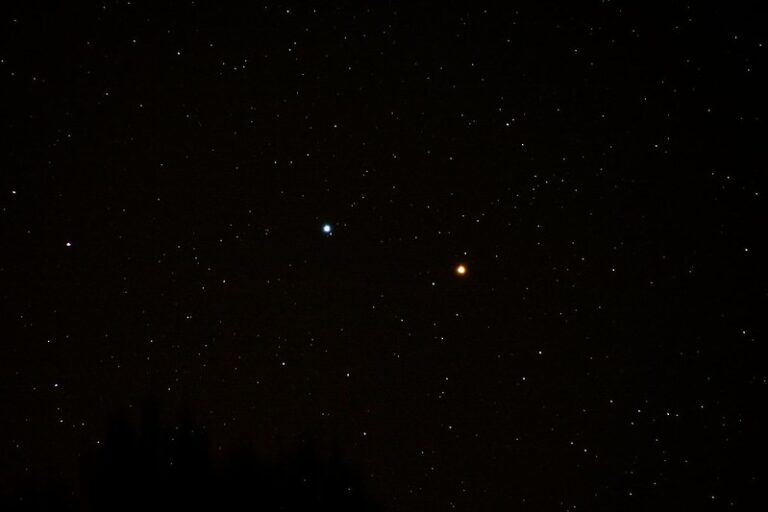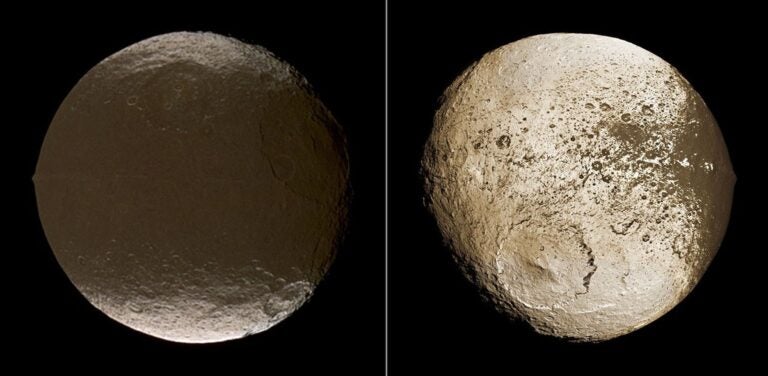About 10 years ago, I was severely bitten by the aperture bug. I was using large telescopes in rural locations to chase down galaxies, as well as obtain detailed views of brighter objects. And while these scopes did produce memorable results, a big telescope has a serious drawback, other than being a beast to transport: You only see a small portion of the sky at a time.
So, to get a better view of the California Nebula, a notoriously faint and expansive object, I started to employ smaller and smaller telescopes, including 10-inch, 8-inch, and 6-inch, achieving various degrees of success. Almost as a lark, I eventually decided to try my luck with a short-focal-length 3-inch refractor. That little refractor, combined with a 2-inch wide-field eyepiece, 2-inch diagonal, and a Hydrogen-beta (Hβ) filter, produced the best view of the California Nebula I have ever seen. It was not barely there, as usual. It was a pronounced, distinct view that stood out from the background. Thus, I began an astronomical adventure to see what else a 3-inch would reveal under a dark sky.
What can one find with such a modest telescope? Well, it will help you spot most of the Messier catalog and many of the Caldwell objects, as well as a lot of other wonders. Yet, what a 3-inch, wide-field telescope really excels at is fitting big objects and groupings of several objects in one view. For example, the 3-inch f/6.2 (500mm focal length) refractor I have been using recently gives me dependable, exciting views of expansive and faint fuzzies like Barnard’s Loop, the Rosette Nebula, and the North America Nebula. It also opens up beautiful panoramas of the open clusters of Cassiopeia, as well as the Sagittarius and Cygnus star clouds.
Let’s look at some of the advantages of small telescope observing, and then I’ll discuss some of my favorite targets, season by season.
Perks of a small telescope
Wide fields of view:
A short-focus telescope gives you a wide field of view. That means you can take in a big chunk of the sky at once. The eyepiece that I use most consistently for survey work with a 3-inch refractor is a 2-inch, 22mm eyepiece with an 82° apparent field of view (AFOV). That translates to a 3.5° true field of view at 23 power — about the same as good wide-field binoculars! And to catch some of the most imaged objects in the sky, you need a large field-of-view. For example, the North America Nebula in Cygnus (NGC 7000 or Caldwell 20) spans about 2° by 1.7° in the sky, while the California Nebula in Perseus (NGC 1499) covers about 2.5°. Plus, having a wide enough field of view allows you to capture some of the darker background sky, making the faint objects you’re targeting stand out even more.
Portability:
The best amateur telescope in the world will not help you enjoy the sky if it never leaves your garage. Small scopes, sometimes referred to as grab-and-go telescopes, are favorites because they can be used on a whim. You’ll be surprised at how often you’ll take it out onto your deck or into your backyard, or even toss it in your trunk and drive to a dark-sky site.
Affordability:
A short-focus refractor or reflector of 3 to 6 inches in diameter doesn’t cost a fortune, which means you could potentially put the money you save toward wide-field eyepieces to use with it. While I have owned 3-, 4-, 5-, and 6-inch extra-low dispersion (ED) refractors, the 2.4- and 3-inch refractors I most often use are the more basic, non-ED designs. I encourage you to go out to a dark site and try looking at the night sky, as you can see lots of neat objects with pretty modest equipment. However, if you really want to chase the big and faint celestial sights, I recommend you to invest in some moderately wide-field eyepieces, narrowband filters, and diagonals.
How to make the most of a small scope
SEEK DARK, TRANSPARENT SKIES. I cannot overemphasize enough how tracking down deep-sky objects with a small scope is far more rewarding if you do it from the darkest, least light-polluted site you can find. Dark skies make the contrast between the object you seek and the surrounding sky much more apparent. There’s simply no getting around the fact that urban skies wash out deep-sky objects. But a small, portable telescope also makes for a good travel companion, providing an excuse to venture to spectacular dark-sky sites like national parks.
CONSIDER A STEADY MOUNT. A solid mount for a small, lightweight telescope is relatively cheap to purchase, and it makes it much easier for you to locate and spot the details of your target. I recommend getting a mount with slow-motion controls, if possible, as they allow for quick and easy fine adjustments. Indeed, I have a fairly robust equatorial mount that I can equip with several scopes at once. And while such a mount may seem like overkill for only a little 3-inch refractor, the excellent handling it provides makes it a breeze to quickly view a lot of different objects during a single night of observing
DON’T FORGET YOUR FILTER. Narrow-band filters are essential for observing faint-emission nebulae, even from a particularly dark-sky site. You’ll be surprised by how well some objects respond to an Oxygen-III (OIII) filter, like the Owl Nebula (M97 or NGC 3587) in Ursa Major or Thor’s Helmet (NGC 2359) in Canis Major. Some objects, such as the California Nebula and Barnard’s Loop, require an Hβ filter to identify them.
GRAB A WIDE-FIELD EYEPIECE. Getting at least one low-power, 60° to 82° AFOV is essential for your deep-sky kit, at least in my opinion. While a good Plössl eyepiece (a design that comes standard with many commercial telescopes) can do the job for many targets, a wide-angle piece makes it far easier to find objects while star-hopping to your targets. An 82° AFOV eyepiece gives a 64 percent wider view than a Plössl eyepiece of the same focal length. Buy or borrow one and experiment, and you’ll be sold on the benefits of wide-field eyepieces.
Target your seasonal favorites
Equipped with the knowledge of why small telescopes can be wonderful tools for deep-sky observing, as well as how to get the most out of them, the only thing left to do is to begin exploring. And fortunately, there are countless terrific targets for you to track down — no matter the time of year.
Celestial sights abound under a dark sky. Regardless the size of your scope, there are many incredible views just waiting for you to discover. So don’t delay: Grab your small scope, a few basic accoutrements, and start hunting!
Winter Targets
Barnard’s Loop
Type: Supernova remnant/emission nebula
Constellation: Orion
To see this very subtle target within the Orion Molecular Cloud Complex, use the lowest possible power and an Hβ filter. You may need to nudge your telescope slightly while viewing the area to notice how the nebulosity moves in the field.
Witch Head Nebula (IC 2118)
Type: Reflection nebula
Constellation: Eridanus
This one’s a real challenge. Located just west of Rigel in Orion, you need a dark site and transparent skies to see it.
Orion’s Belt
Type: Association and emission nebulae
Constellation: Orion
With a 3-inch refractor, you can easily spot the nearby Flame Nebula, as well as hints of the emission nebula IC 434, which harbors the shadowy Horsehead Nebula. The reflection nebula M78 lies just outside the field to the northeast.
NGC 2174 & NGC 2175
Type: Emission nebula and open star cluster
Constellation: Orion
Both of these targets are easy to pick out without an Oxygen-III (OIII) filter.
Rosette Nebula
Type: Emission nebula
Constellation: Monoceros
This celestial sight is also visible without filters,but an OIII filter still enhances the view.
Spring Targets
M48 (NGC 2548)
Type: Open star cluster
Constellation: Hydra
From a dark-sky location, you should be able to see this cluster with your naked eye. It is nicely resolved in 2.4- and 3-inch refractors.
M81 (NGC 3031) & M82 (NGC 3034)
Type: Galaxy grouping
Constellation: Ursa Major
Visible in both 2.4- and 3-inch refractors, this view is one of the grandest galaxy pairings in the sky.
Omega Centauri (NGC 5139)
Type: Globular star cluster
Constellation: Centaurus
If you live in the lower 48 states or Hawaii, this is one of the most amazing sights in the sky. It’s easy to see with 2.4- and 3-inch telescopes. Plus, the peculiar galaxy Centaurus A (NGC 5128) is located about 4.5° north, and even sports a dark lane.
Beehive Cluster (M44, NGC 2632)
Type: Open star cluster
Constellation: Cancer
This seasonal treat is easy to pick out and fully resolved with the smallest of scopes. You can even see it with your naked eye under very dark skies.
M65 (NGC 3623) & M66 (NGC 3627)
Type: Galaxy grouping
Constellation: Leo
Can you also pick up hints of a third galaxy nearby, the Hamburger Galaxy (NGC 3628)?
Summer Targets
Eagle & Omega nebulae (M16, M17)
Type: Emission nebulae panorama
Constellation: Serpens & Sagittarius
Both 2- and 3-inch refractors capture the Eagle Nebula and Omega Nebula (M16 and M17, respectively) in the same field of view. The Omega Nebula’s classic check mark shape is readily apparent in a 3-inch scope.
Lagoon & Trifid nebulae (M8, M20)
Type: Emission nebulae panorama
Constellation: Sagittarius
As two of the best emission nebulae visible from the Northern Hemisphere, these targets are easily seen in a single field of view with 2- to 3-inch refractors. Many other open and globular clusters speckle the same area of the sky.
Ptolemy’s Cluster (M7 or NGC 6745)
Type: Open star cluster
Constellation: Scorpius
Ptolemy’s Cluster is a beautiful, fully resolved grouping of stars that can be seen in both 2- and 3-inch refractors. Look for the globular cluster NGC 6453 on its northwest edge and the dark nebulae B286 and B287 to the south. With a wide enough field of view, you can also catch the Butterfly Cluster (M6), located about 3.5° to the northwest.
M22 (NGC 6656), M28 (NGC 6626), NGC 6638
Type: Globular star cluster panorama
Constellation: Sagittarius
Look at Lambda (λ) Sagittarii, the star at the top of the Teapot asterism. In the same field, you will easily find two fine globular star clusters, along with a third that’s more of a challenge.
North America Nebula (NGC 7000)
Type: Emission nebula
Constellation: Cygnus
Use your lowest power/widest field-of-view eyepiece and an OIII filter for the best view possible of NGC 7000. The region is about 1° to 2° east-southeast of the bright star Deneb.
Fall Targets
Barnard’s Galaxy (NGC 6822)
Type: Dwarf galaxy
Constellation: Sagittarius
This target is another real challenge. I have seen Barnard’s Galaxy in many other scopes, but in a 3-inch refractor, it appears as a patch of sky that’s just slightly brighter than the background.
Pleiades (M45)
Type: Open star cluster
Constellation: Taurus
At almost 2° wide, the Pleiades (or Seven Sisters) fits nicely in the field of view of both 2- and 3-inch scopes. You should even glimpse the reflection nebulae around the brightest stars; I can usually make out at least two patches.
NGC 253 & NGC 288
Type: Galaxy and globular star cluster pair
Constellation: Sculptor
Also known as the Silver Dollar Galaxy, the spiral NGC 253 fits into the same field of view as the globular NGC 288 when viewed through both 2- and 3-inch refractors.
California Nebula
Type: Emission nebula
Constellation: Perseus
At 2.5° in length, you need a wide-field view to pick up this cosmic tribute to the most populous state in the U.S. Use an Hβ filter to achieve the best results.
The Helix Nebula (NGC 7293)
Type: Planetary nebula
Constellation: Aquarius
Wow, this is an exceptionally big planetary nebula! It’s faint, but easy to see without a narrow band filter; however, an OIII filter makes it (and its dimmer central region) more obvious through a 3-inch scope.

